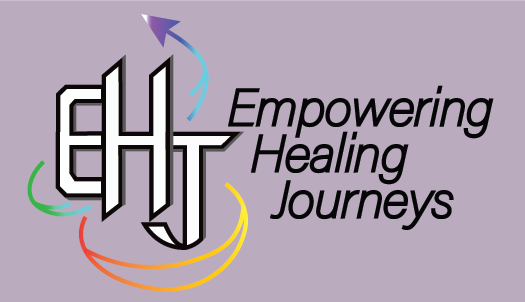Our advanced medical technologies, vaccines, and diagnostic tools are necessary to save and prolong lives. We are taught only medical professionals have the ability to heal us and don’t believe that healing requires our participation. Despite witnessing how wounds slowly mend, starting with your first skinned knee, we still don’t think we have an active role in our healing.
What healing encompasses
Healing includes your body’s ability to fight infections, and accept organ transplants, biological heart valves, or prosthetic devices like stents, hip joints or pacemakers. After a biopsy or surgery, how do your tissues mend so that you don’t have to return to your doctor for more stitches, glue, or staples? The ability to repair tissues, correct mutations in our DNA or turn genes on or off showcases the body’s unique capability to heal. This is healing which medicine and science have yet to fully understand nor re-create.
But healing is not restricted to just our physical bodies. Emotional and mental traumas are internally sensed but invisible to others. These may lead to feelings of inadequacy, fear, anxiety, pain, anger, poor self-esteem, social isolation, or an inability to connect with others and nature. Our medical industry’s solution is to control these symptoms pharmacologically. The root causes of these traumas may stem from experiences that individuals were ill-equipped at the time to understand or process mentally or emotionally. Further growth and development may understandably be impeded afterwards.
Movement, emotions, and mental processing develop simultaneously
In humans, movement, mental processing and emotions develop simultaneously and therefore, Dr. Feldenkrais believed these processes are intimately linked. For example, an individual with poor self-esteem stands and moves differently than one who is confident. In Awareness Through Movement lessons, students learn through movement choices that their movement patterns and beliefs about movement are not permanent. Similar to movement, he proposed we also have choices in our emotions and how we think. Choices form the basis of learning and self-improvement. Through movement, Dr. Feldenkrais challenged his students to realize their potential as autonomous human beings.
For example, what is your automatic response when a driver cuts you off in traffic or doesn’t allow you to merge onto the freeway? It’s very difficult to stop an emotional response because the lower brain quickly engages before the rational brain does. Is it possible to observe your usual response in the moment, hold onto that moment and consider another course of action? Perhaps the other driver didn’t see you, has a personal emergency, is late for an appointment, or didn’t intentionally seek to irritate you?
By increasing the time between the stimulus and your response, you create an opportunity to consciously decide how you wish to expend your energy and attention. A reactive response or a conscious one, is neither right nor wrong. Why you made one choice vs. another is what’s important. If you exercised your free will, you made a conscious decision to either be drawn into the other driver’s drama or not. Recognizing your power to make conscious decisions exercises your agency as a healthy, mature, independent person. Becoming a conscious human being is an arduous, solo journey that few people embark upon because it tests the very beliefs that define us.
Re-examining your beliefs and identity
We were taught generational beliefs and customs at an early age. As dependents, we were rewarded for obeying them. This ensured our survival within the family, tribe or society. We acquired mannerisms, ways of thinking and learned how to navigate our world without knowing alternatives existed. Eventually, we learned to identify ourselves within the boundaries of our learned beliefs and environment. Similar to belief systems, humans are not predisposed to learn a specific language. The language(s) you learned is a consequence of being born to your parents and your place of birth.
Challenging the beliefs you learned essentially questions your identity and values. Although change is inevitable, accepting change is inherently difficult. The difficulty lies in the work that change promises. Discerning beliefs that work for you and discarding those that don’t is work. Letting go of the familiar and feeling ungrounded is uncomfortable territory for most people. Moreover, even the people you know prefer you don’t change because they’ll have to change how to interact with you.
Years ago, my sister’s doctor prescribed a painkiller following shoulder surgery. Offhandedly he told her, “You’ll be able to tolerate this drug…unless you’re Jewish.” She took the prescribed dose well before her next physical therapy appointment and became violently ill. She called me and said, “Guess what?? We might be Jewish!” I didn’t know how to process this information. Eventually, I concluded it didn’t make any difference.
Healing demands conscious, regular participation
What does this have to do with healing? Healing is inclusive and does not discriminate. It transcends all borders, ethnicities, languages, cultures, space, time, our beliefs and identities. It’s dynamic and influenced by thoughts, negative and positive, which manifest our conscious and subconscious intentions. A healthy person doesn’t question whether a paper cut will heal or not. It might be annoying, but the cut heals in due time.
Healing is available to everyone, but it requires active, regular participation. It means to pay attention and make conscious choices that sustain your body’s innate, dynamic intelligence for nutrition, exercise, hydration, discomfort and rest instead of using your willpower to subdue it. Willpower uses the mind to dismiss and disempower the body. Likewise, attending to your mind to address negative thoughts or emotions prevents them from festering and impacting your body.
A harmonious life is impossible if it’s littered with inconsistencies and strife. By regularly practicing self-reflection and self-awareness, we intentionally bring our thoughts, words and deeds into alignment and take full responsibility for ourselves. Maintaining balance within your physical body, emotions and mind empowers your ability to heal. Becoming a conscious, self-sufficient human being will constantly challenge your beliefs, but the rewards are immeasurable..

